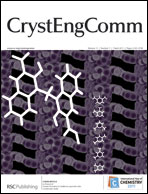In this paper, three dimensional mesoporous CeO2 hierarchical structures were synthesized through the thermal decomposition of cerium formate precursors, which were prepared by a solvothermal method. X-ray diffraction (XRD), field-emission scanning electron microscopy (FE-SEM), transmission electron microscopy (TEM), Fourier-transform infrared (FT-IR), and Thermal gravimetric (TG) was applied to characterize the precursors. Urchin-like Ce(HCOO)3 precursors were prepared using dimethyl sulfoxide (DMSO) and ammonia solution (1 M) as solvent and base source, respectively, while coral-like Ce(HCOO)3 precursors were prepared using dimethyl formamide (DMF) and NH4HCO3 as solvent and base source, respectively. The formation mechanism of the hierarchical structured precursors was proposed involving a process of anisotropic growth–H2O induced self-assembly–oriented aggregation and disassembly–Ostwald ripening. CeO2 hierarchical structures were obtained by annealing the corresponding Ce(HCOO)3 precursors at 400 °C for 60 min. N2 adsorption–desorption isotherms indicate that both CeO2 hierarchical structures derived from their Ce(HCOO)3 precursors display large surface areas and high pore volumes. In addition, the as-prepared CeO2 catalysts with hierarchical structures are highly active for conversion of CO to CO2.

You have access to this article
 Please wait while we load your content...
Something went wrong. Try again?
Please wait while we load your content...
Something went wrong. Try again?


 Please wait while we load your content...
Please wait while we load your content...